Table of Contents
ARE YOU DOING THE RIGHT THING? OR are you a “DOING THINGS RIGHT” person?
and…
Do you know the difference between MORALITY & OBEDIENCE?
MORALITY is to do the right thing no matter what they tell you to do,
OBEDIENCE is to do what they tell you to do even if it’s not the right thing.
Or, if you are a leader, what your reports subtly condition you to do…because so many leaders just want to be liked…and their reports know it.
So…what kind of a leader are You? and how do you sort out that critical thinking question?
It’s a tricky one, keep reading.
Doing the right thing or doing things right is one of the most pivotal critical thinking questions for leadership, more defining of a leader’s character than one perceives.
It can make the difference between long-term professional success and a mediocre “gone with the wind” obedient leader (obedient to their fears) that doesn’t have the guts to put their own mark on their professional and personal life.
A leader that is compromised by their people (the fear of not being liked is a big one in leadership) away from their natural instinct will rarely if ever, find themselves doing the right thing.
Challenging? Too Blunt? Perhaps…but then again real life is, and if you are a leader you know that every decision that you make you swing between these two considerations, (even unconsciously) which will lead to very different results and further consequences, short-term and long-term.
It is fascinating how a small change in the order of the words, can make such a difference in the meaning…DOING THE RIGHT THING or DOING THINGS RIGHT
Why is it such a critical thinking question? Well, because it points to the difference between two major schools of thought that parted company.
The big picture of strategic thinking and the immediate picture of tactical thinking, which were meant to be complementary to one another.
Doing The Right Thing – The Big Picture
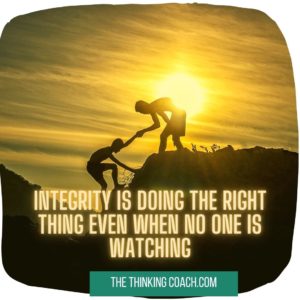
“Doing the right thing” often entails the endurance to absorb a “short-term pain for a long-term gain”, or put differently, a long-term view that leads the way.
It is all about the big picture. Doing The Right Thing is a strategic state of mind that includes facts, consequences, and the Big 3…Instincts, Feelings, and Emotional Intelligence, all of which are much more accurate and intelligent than “gain and loss” mundane thinking.
A common thinking mistake is to rely on past experience and apply it automatically to present decisions, which is a very risky thing to do, given how quickly things change.
The Big 3 are “agencies of the now” that if we learn to listen to them can guide us to doing the right thing and make wise decisions.
Unfortunately, they are being ignored all too often because someone told us that decisions need to be devoid of these vital aspects, and should be dry and lifeless. They lied!
When you, the leader, ask yourself this critical thinking question “Am I doing the right thing?” you instantly open yourself to the Big Picture, and added intelligence seems to come from inside you. You pay focused attention to current circumstances and act in response to NEED.
“Doing the right thing” state of mind sees more, feels more, and thinks more than a state of mind of a blind stickler to regurgitated policies. It requires COURAGE and SENSITIVITY.
“Doing the right thing” often stands in total contrast, and opposition, to doing things right and elevates the conversation to a level of a paradigm shift in thinking.
It’s all about responding to the needs of the moment, with caution, but without psychological hindrances. It is to do with the extraordinary response, which gives full measure to what’s needed.
“Let The Need Lead” is the motto of “doing the right thing”.
There are instances that call for a different level of “Doing”, which comes from deeper considerations. “Doing the right thing” brings an extra element to the equation, a human touch, which is evident by the added value of emotional intelligence.
It often calls upon special human qualities such as courage and a higher instinct response, which results in “out of the box” actions.
When a person engages in a state of mind of “doing the right thing” they are being much closer to who they are naturally and to their value system.
Doing the right thing is extremely satisfying in a special way. (I am sure you know what I am talking about).
A couple of examples… “doing the right thing” salesperson, tells their client the truth about an item and suggests to them not to buy it. They lost the sale in the short term but won a loyal future customer.
Another example, a leader that enables their reports to learn from making mistakes without punishment or micromanagement, which is a long-term confidence builder.
And another, Tom Brady’s ability to build a cohesive team around him and create a rare kind of trusting unity which is an example of doing the right thing which then leads naturally to doing things right at game time.
To build a “doing the right thing” state of mind a leader needs to be at learning all the time and never rest on their laurels, with a sense of humbleness that values other people and doesn’t take themselves too seriously.
A Strategic Communication Tip…
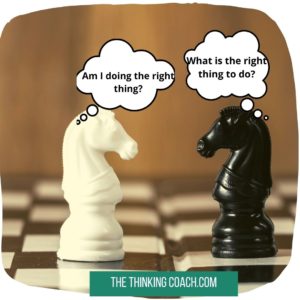
“Doing the right thing?” or “Doing things right?
Well, you can feel it, can’t you?
If you repeat these two sentences over and over you will know/feel the difference. Your tone of voice will differ between Doing The Right Thing and Doing Things Right. Even your body language will change. (try it).
“Doing The Right Thing“, these words convey a definite sense, a feeling, an impression, a determination, emotional intelligence. But then again, that’s exactly what words were meant to do…convey a feeling!
So The strategic communication tip is to speak these words to yourself with the right tone and body language and you’ll instantly get it. That is how intelligent our systems are when we engage the Big 3.
What’s Wrong With Doing Things Right?

Nothing!
When we hear these words we get the sense right away. “Doing things right” is characterized by adhering to policies and procedures.
It is to do with the ordinary and perfunctory level of response that has been dictated from outside. It is short-term inclined and operates, usually, on automatic pilot. It helps maintain the stability of a status quo that can be trusted.
There is a really funny scene in the movie Meet The Fockers # 1 – when Ben Stiller is about to board a flight, in which he is the only passenger waiting to board, and the flight attendant stubbornly calls the order of rows that need to board, so he has to wait his turn regardless...
“Let the system think for me” is the Modus Operandi of “doing things right”
Order is a great thing, as long as it doesn’t control and excludes the human aspect from our decisions and actions.
On the downside, however, it can be rigid and inflexible without responding to the needs of the moment, which occur when two or more living and breathing human beings engage in solving problems or finding new ways out of a jam.
How many times have you been at a receiving end of a phone call where the other party kept telling you “that’s our policy” without attending to the real needs of the moment?
You felt you were a “thing” not treated like a human, didn’t you? While on the other end of the line you felt you were dealing with a robot who was programmed to do things right (and perhaps reading at you from a prepared script).
Policies can be great at times but miss the mark when humanity and emotional intelligence are needed.
What Caused A Mentality of “Doing Things Right”?
We live in a culture that attempts to do things right!
Often, this level of functioning is not enough to respond to human needs, which necessitates considering the big picture, understanding people, thinking for oneself, or responding from one’s heart.
School education teaches us to do things right, pass examinations, often, without thinking about the merit of what is being studied and its relevance to everyday living, “because this is the curriculum and we must do things right, whether it makes sense or not”. 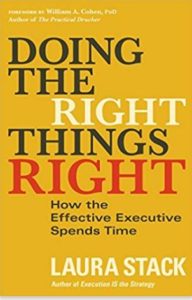
With all due respect, the Pythagoras equation of A2 +B2 = C2 , or memorizing Shakespeare by heart, or remembering the cost of bushels of wheat that were sent from India to Pakistan in the 1960s, will not relieve stress and aggravation from everyday difficulties of teenagers, but rather cause more pressure to pass such futile tests!
The tragic thing is that the intelligence of an adolescent is measured and judged according to their ability to memorize such “useless” information, which of course is not the case, and demonstrates how degenerative “doing things right” can be.
Memorizing useless information is not a measure of intelligence, yet the aspect of “doing things right” makes it so.
So we have been ingrained with learning to do things right, (learn by rote), which puts us at distance from the natural response of Doing The Right Thing.
Again…How many times have you questioned the logic of a decision only to hear the most depressive words ever spoken: “that’s our policy…”
“Doing The Right Thing” Challenge in Team Meetings

Very often, in team meetings, there is no real agreement or commitment because no one wants “to do the right thing” because they are all afraid of each other.
Team meetings can be a nauseating attempt to do things right, which often results in boring ineffective meetings.
When it comes to teamwork, the ability to do the right thing by any member of the team affects the whole team in a powerful and positive way that often sets the tone and commitment at a new and higher level.
This is a situation where “Doing the Right Thing” becomes part of “Doing Things Right”, which is the greater empowering consideration.
In other words, a cohesive team’s way of “doing things right” is by being honest enough to always be doing the right thing, by every member of the team.
How often does this happen in the business world that we have created? Rarely, but it does.
When it happens it’s a wonderful situation to be part of, where people trust each other, feel free to speak their mind, and are willing to weigh in honestly, commit, take ownership and focus on results.
When such teamwork goes on it can be a beautiful example of how effective “doing the right thing” can be and it depends on a collective conscious decision.
How Should a Leader Sort This Critical Thinking Question?
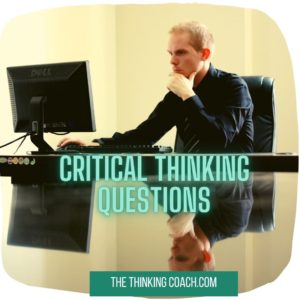
The very fact that a leader would even consider the critical thinking question “doing the right thing or doing things right?” says that they are leaders that can be trusted.
True leadership was meant to be courageous when needed, take risks when needed, and follow procedures when needed.
Actions taken by leaders should be a careful consideration of both aspects, the procedural and the instinctive.
Not one in favor of the other, but rather a balanced decision, wrestling with this critical thinking question, which makes sense and feels right.
Were we to generalize, one of the main differences between managers and leaders is the difference between doing things right and doing the right thing.
A charismatic leader develops the “knack” to do the right thing in the decision-making process…if they are a true leader where the well of the people is uppermost in their consideration.
Finally
So, Doing The Right Thing or Doing Things right…Well, here is the best way to sort out this critical thinking question:
Develop a state of mind where Doing the Right Thing and Doing Things right are integrated. The way they should integrate is that “Doing the Right Thing” is the main consideration while “Doing Things Right” can then become part of it.
That means, that as part of Doing The Right Thing you can use the tool of Doing Things Right.
While, following the procedure in many cases is the right thing to do, in the “human business” Doing The Right Thing is where the core of problem-solving and problem prevention is.
So, hopefully, this article gives you enough to sort out this critical thinking question, where, really, it isn’t a question, it is rather a leader’s strategic state of mind to blend the two according to need.
The Thinking Coach
As The Thinking Coach, I provide high caliber leadership training courses and employee training development seminars worldwide, where professionals get the right kind of training to enable them to practice a combination of soft skills that help them do their jobs much better…no, much much better.
Eli Harari
The Life Coach for Professionals™
Images courtesy of Pixabay, Pexel, Unsplash, Flickr, Pxhere, MaxPixel.

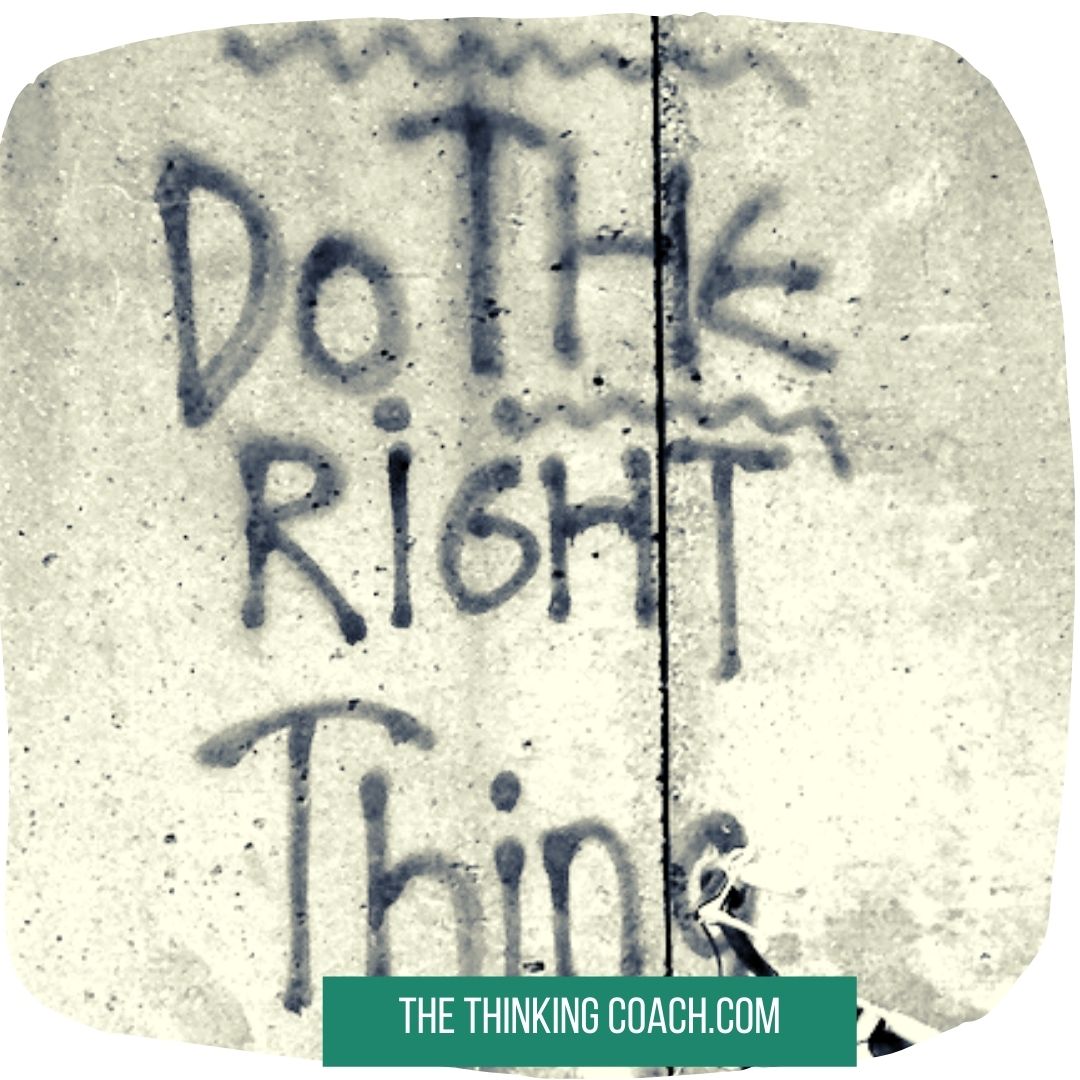

The goals taken at college definitely affect you differently than goals taken when working for a corporation or building your own business for that matter.
You are right in your comment – thanks for the input.
All the best – Eli
Pingback: The Tuning Fork Effect - 7 Essential Steps To Successfully Change - The Thinking Coach
Pingback: Think Positive And Empower Productivity - 4 Key Perceptions To Success - The Thinking Coach
Very inspirational and like to get to know about more other things like this 😀
Yes, it is very inspirational, thanks, Joyce. I do hold workshops, seminars, and one on one training programs in the field of leadership that make and create a marked increase in overall productivity and workplace atmosphere.
Pingback: 3 Basic Steps To Boost Performance & Take Your Team To The Top - The Thinking Coach